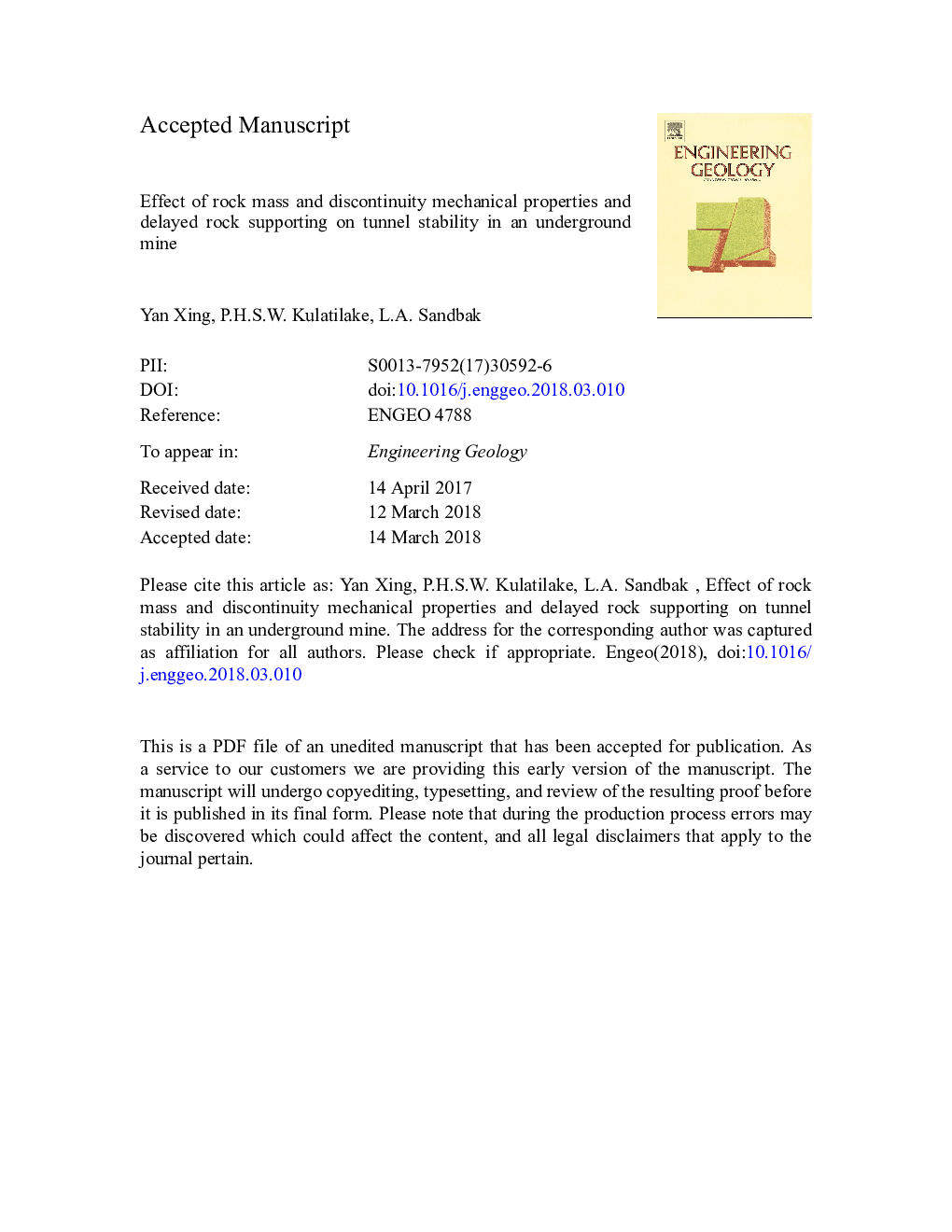| Article ID | Journal | Published Year | Pages | File Type |
|---|---|---|---|---|
| 8915905 | Engineering Geology | 2018 | 39 Pages |
Abstract
In this paper, the rock mass stability around the tunnels in an underground mine is investigated using the distinct element method. A three-dimensional model was developed based on the available geological, geotechnical, and mine construction information. It incorporates the inclined lithologies including a weak interlayer, the persistent and non-persistent faults, and a complex tunnel system. The strain softening constitutive model was prescribed for the rock masses in the numerical model. The continuously yielding joint model was used to describe the non-linear behavior of the faults. To account for the deformations occurred between the excavations and rock supporting, the delayed installation of supports was implemented by using the stress relaxation method. Numerical analyses were performed to study the effects of the post-failure constitutive parameters of the rock masses, the mechanical properties of faults and the delayed supporting on tunnel stability. The following results are presented: (a) the rock mass deformations and failure zones around the excavations, (b) the joint shear displacements of the major fault, and (c) the failure conditions of the applied supports. Satisfactory comparisons are obtained between the predictions based on numerical modeling and the field deformation measurements. The analysis procedures presented in this study are applicable for stability assessment of various underground rock excavation projects located in different parts of the world having different geological settings and complex engineering situations.
Related Topics
Physical Sciences and Engineering
Earth and Planetary Sciences
Geotechnical Engineering and Engineering Geology
Authors
Yan Xing, P.H.S.W. Kulatilake, L.A. Sandbak,
